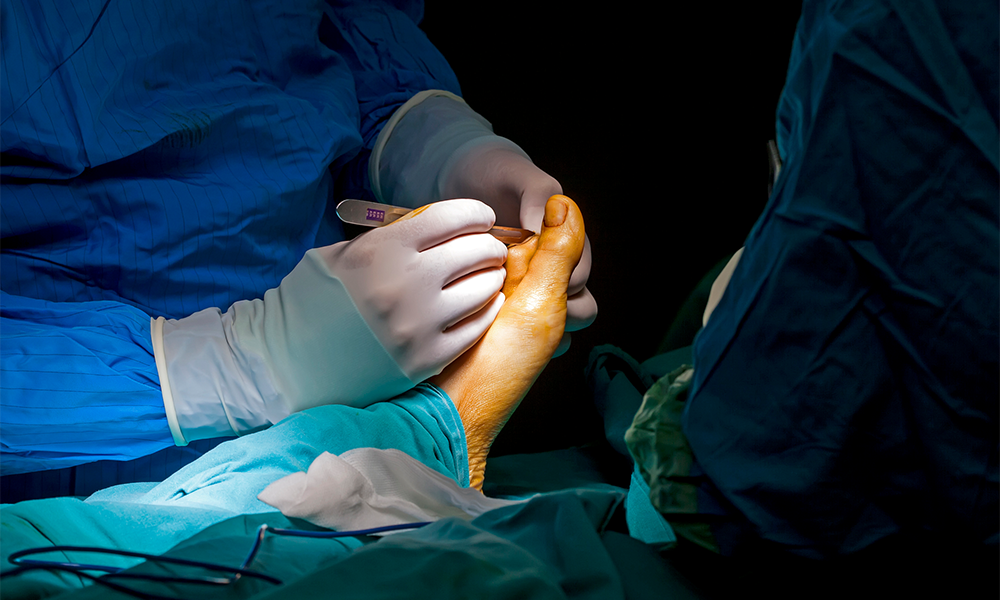More than 50 million Americans suffer from arthritis, a degenerative disease that causes intense pain and loss of motion in the joints. It is also the nation’s number one cause of disability, leaving millions unable to work and engage in everyday activities like walking and climbing stairs without intense pain. Unfortunately, many cases of debilitating arthritis affect the big toe (called hallux rigidus), and this type of arthritis may require a surgery called cheilectomy.
What Is Cheilectomy Surgery?
A cheilectomy is an operation that aims to remove a bone spur that has formed on the top of the big toe. Most bone spurs (sometimes called bony lumps) that grow on top of the big toe are caused by arthritis of the big toe, which is called hallux rigidus. People who are considering cheilectomy surgery usually have big toe pain along with limited range of motion of the toe. In fact, the body purposefully produces the bone spurs to limit a person's range of motion and therefore help decrease arthritic pain.

The two most common reasons why a cheilectomy would be performed are:
- The bone spur creates pain when a patient is wearing shoes
- It can serve as a treatment option for early arthritis of the big toe
In both cases, a cheilectomy is not considered a first option of treatment. Most doctors will recommend patients try various shoes and medications to help eliminate hallux rigidus pain before considering surgery.
What Can One Expect From A Cheilectomy Operation?
Patients who opt for a cheilectomy surgery can expect to arrive and leave the hospital the same day of the operation. Cheilectomy surgeries can be done under general anaesthetic (the patient is to put to sleep during the surgery) as well as local anaesthetic, which is when a numbing injection is inserted into the leg so the patient can’t feel any pain in the foot during the opertaion. Many patients prefer the latter option because it involves less time in the hospital, less drowsiness, and the ability to eat and drink as usual both before and after the surgery.
What Is The Recovery Period Like After Cheilectomy?
A cheilectomy foot operation is a fairly simple surgery and the majority of patients will fully recover from the operation 6 to 8 weeks after the surgery. Most patients are required to come in for a follow up appointment about two weeks after the surgery. At this point, your doctor will recommend that you begin gently moving and stretching your toe to prevent permanent stiffening and will likely give you the okay to begin walking again.
RELATED: 7 Fashionable Shoe Options For Women With Bunions
Some patients may be able to return to work at this point, but it largely depends on the type of job the patient has: patients with desk jobs that don’t require much standing or movement can return to work weeks and sometime months earlier than patients whose jobs require lots of standing and heavy manual labor.
If a patient received cheilectomy due to a bone spur not caused by arthritis, he or she can expect a permanent recovery; bone spurs rarely, if ever, grow back. However, patients who opted for cheilectomy to help treat arthritis may still have to deal with joint pain and toe stiffening, as there is no way to cure arthritis. Cheilectomy for big toe arthritis is only meant to help relieve symptoms and lessen pain caused by the disease.


